Spon Street runs along the north side of the Skydome complex. Now part of a conservation area, Spon Street has many of Coventry’s ancient listed buildings. At the east end of the street, near Saint John’s Church, stood Spon Gate. Built soon after 1391, it was one of the 12 gates in the city wall around Coventry. Spon Gate was demolished in 1771.
Illustrations and text about the Spon Gate.
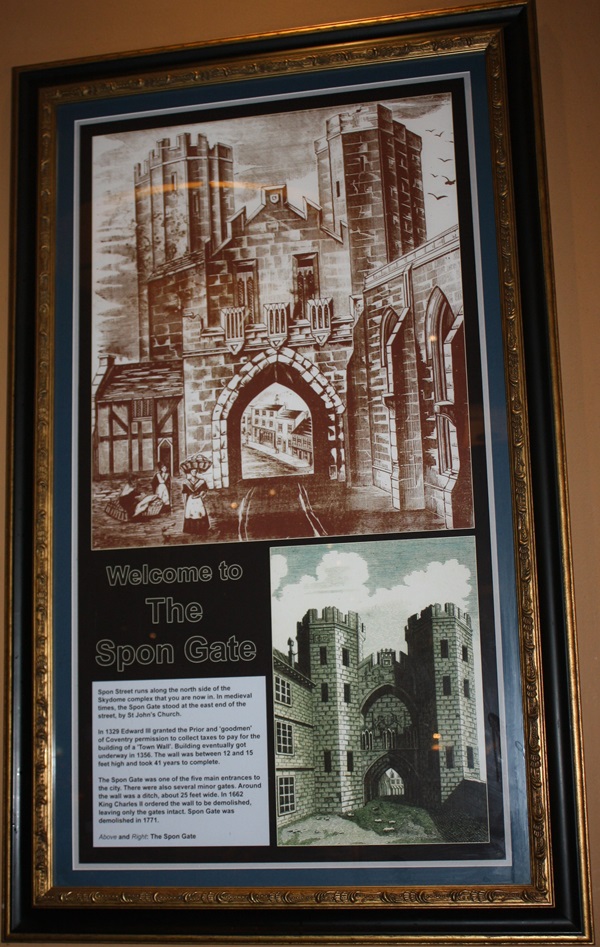
The text reads: Spon Street runs along the north side of the Skydome complex that you are now in. In medieval times, the Spon Gate stood at the east end of the street, by St John’s Church.
In 1329 Edward III granted the Prior and ‘goodmen’ of Coventry permission to collect taxes to pay for the building of a ‘Town Wall’. Building eventually got underway in 1356. The wall was between 12 and 15 feet high and took 41 years to complete.
The Spon Gate was one of the five main entrances to the city. There were also several minor gates. Around the wall was a ditch, about 25 feet wide. In 1662 King Charles II ordered the wall to be demolished, leaving only the gates intact. Spon Gate was demolished in 1771.
Above and Right: The Spon Gate.
Illustrations, photograph and text about Spon Gate and old Coventry.
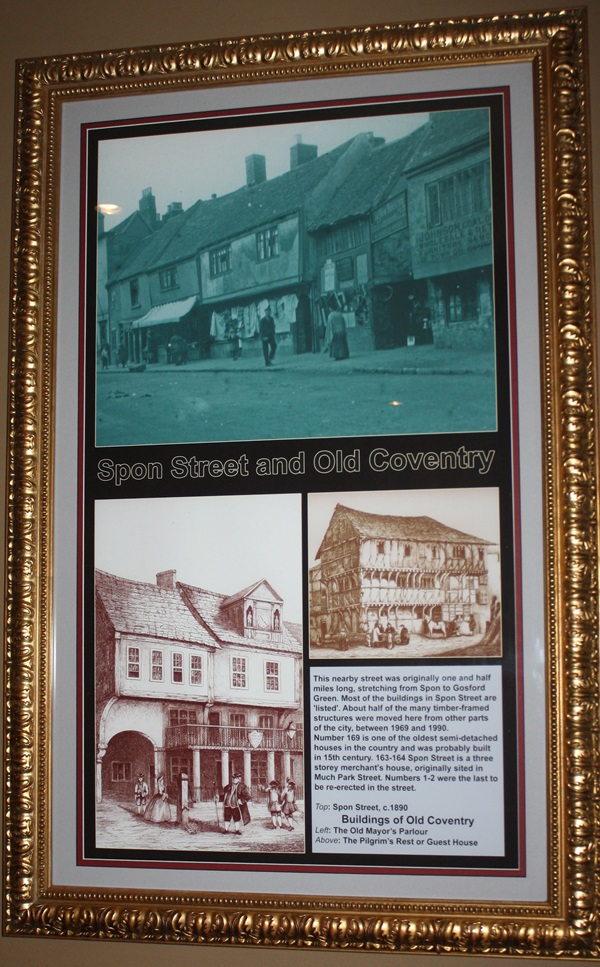
The text reads: This nearby street was originally one and half miles long, stretching from Spon to Gosford Green. Most of the buildings in Spon Street are ‘listed’. About half of the many timber-framed structures were moved here from other parts of the city, between 1969 and 1990.
Number 169 is one of the oldest semi-detached houses in the country and was probably built in the 15th century. 163-164 Spon Street is a three story merchant’s house, originally sited in Much Park Street. Numbers 1-2 were the last to be re-erected in the street.
Top: Spon Street, c.1890
Left: The Old Mayor’s Parlour
Above: The Pilgrim’s Rest or Guest House.
Photographs, illustrations and text about Coventry Cathedral.
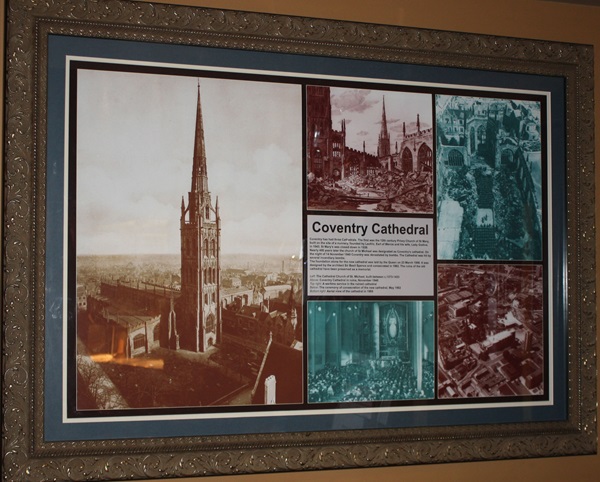
The text reads: Coventry has had three Cathedrals. The first was the 12th century Priory Church of St Mary. Built on the site of a nunnery, founded by Leofric, Earl of Mercia and his wife, Lady Godiva, in 1043. St Mary’s was closed down in 1539.
Nearly 400 years later the church of St Michael was designated as Coventry’s Cathedral. On the night of 14 November 1940 Coventry was devastated by bombs. The Cathedral was hit by several incendiary bombs.
The Foundation stone for the new cathedral was laid by the Queen on 23 March 1956. It was designed by the Architect Sir Basil Spence and consecrated in 1962. The ruins of the old cathedral have been preserved as a memorial.
Left: The Cathedral Church of St. Michael, built between c.1373-1433
Above: Coventry Cathedral in ruins, November 1940
Top Right: A wartime service in the ruined cathedral
Below: The ceremony of consecration of the new cathedral, May 1962
Bottom right: Aerial view of the cathedral in 1959.
Prints and text about the Coventry Gates.
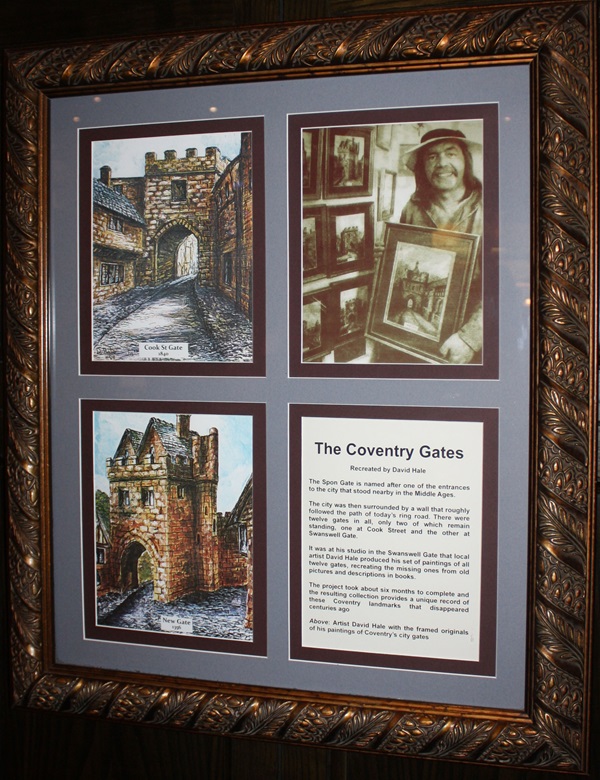
The text reads: The Spon Gate is named after one of the entrances to the city that stood nearby in the Middle Ages.
The city was then surrounded by a wall that roughly followed the path of today’s ring road. There were twelve gates in all, only two of which remain standing, on at Cook Street and the other at Swansell Gate.
It was at his studio in the Swansell Gate that local artist David Hale produced his set of paintings of all twelve gates, recreating the missing ones from old pictures and descriptions in books.
The project took about six months to complete and the resulting collection provided a unique record of these Coventry landmarks that disappeared centuries ago.
Above: Artist David Hale with the framed originals of his painting of Coventry’s City gates.
Prints of the Coventry Gates re-created by David Hale.
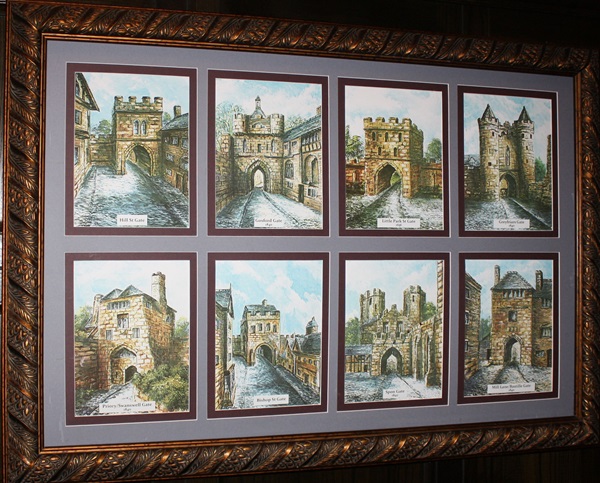
A photograph of the interior of the workshop of Smith & Sons, watch balance manufacturers.
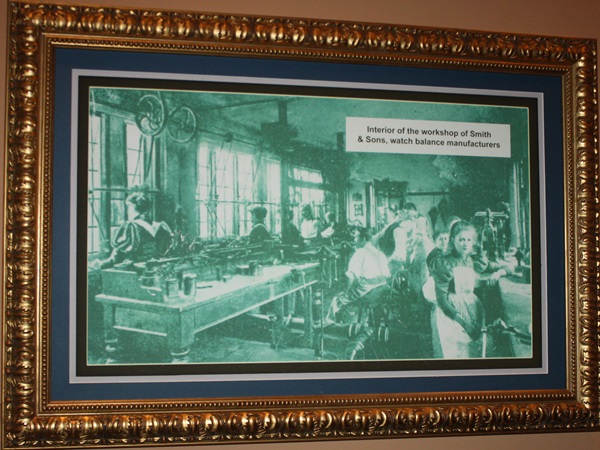
A photograph of a Coach Watch by Edwards East, c1660.
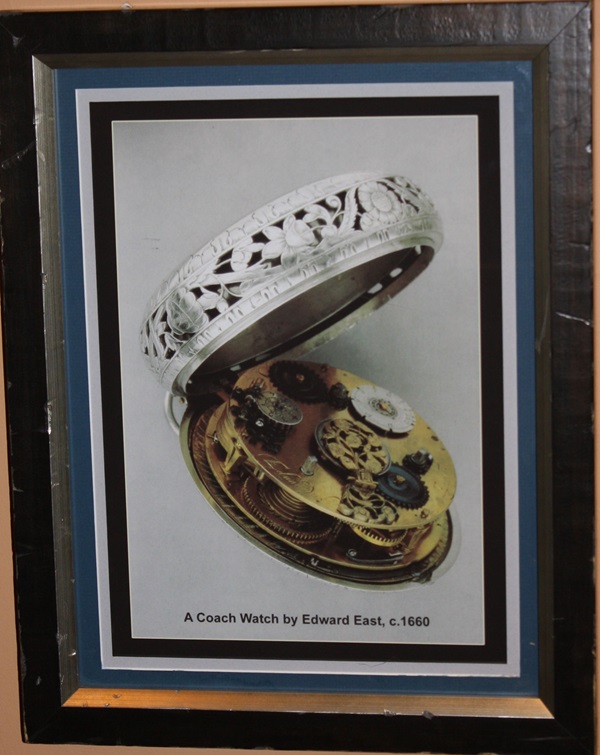
A photograph of a watch hallmarked in Birmingham, with a case made by James Heales of Coventry, and a movement that was probably made here, c1830.
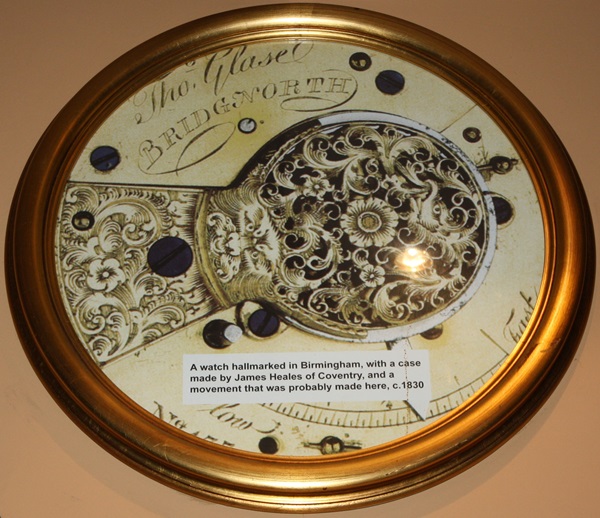
A photograph of a watch by Samuel Louth, c1817, hallmarked in Birmingham, with a case by Hannah Howard of Coventry.
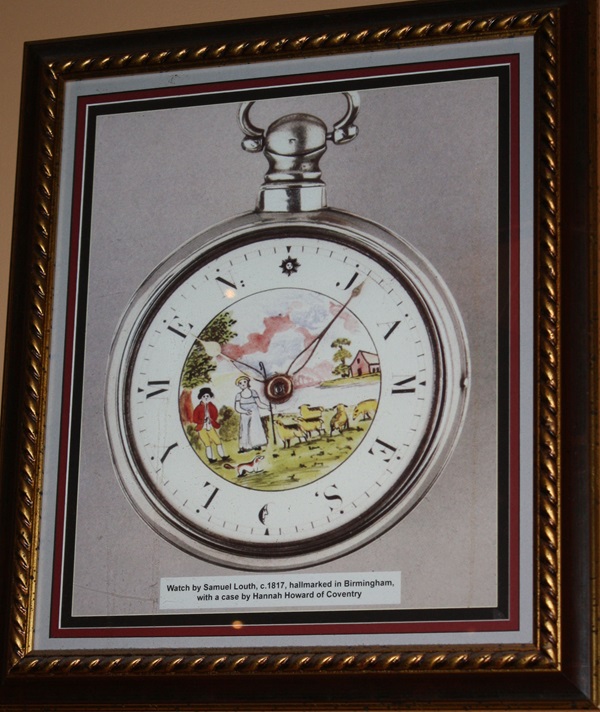
An engraving of Coventry, c1657, by Hollar.
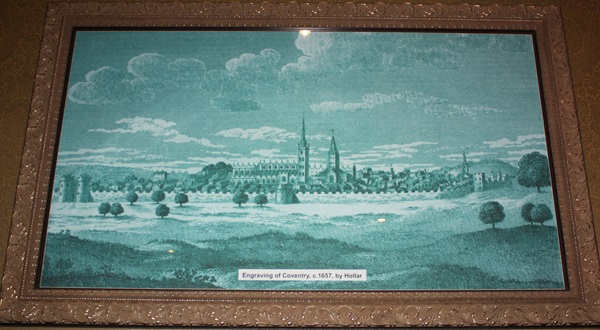
A photograph of a Rudge five-seater cycle at Monk’s Kirby.
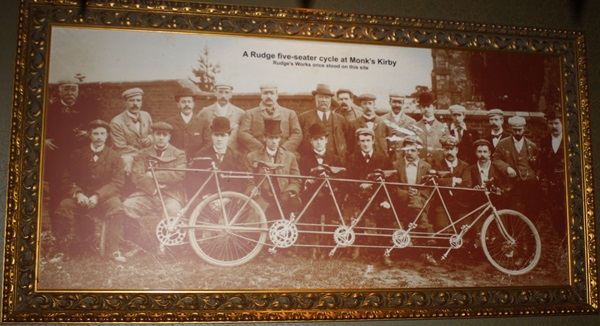
An illustration of the Procession of Lady Godiva at Coventry Fair, 1825.
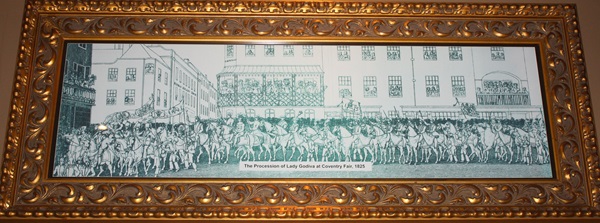
A photograph and text about Lady Godiva.
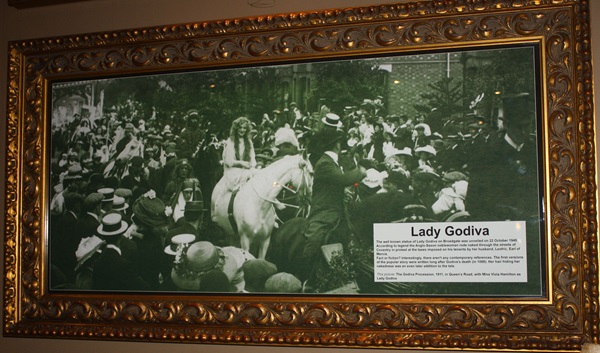
The text reads: The well Known statue of Lady Godiva on Broadgate was unveiled on 22 October 1949. According to legend the Anglo-Saxon noblewoman rode through the streets of Coventry in protest at the taxes imposed on his tenants by her husband, Leofric, Earl of Mercia. Fact or fiction? Interestingly, there aren’t any contemporary references. The first versions of the popular story were written long after Godiva’s death (in 1088). Her hair hiding her nakedness was an even later addition to the tale.
This picture: The Godiva Procession, 1911, in Queen’s Road, with Miss Viola Hamilton as Lady Godiva.
Photographs commemorating the man who revitalised Coventry’s industry.
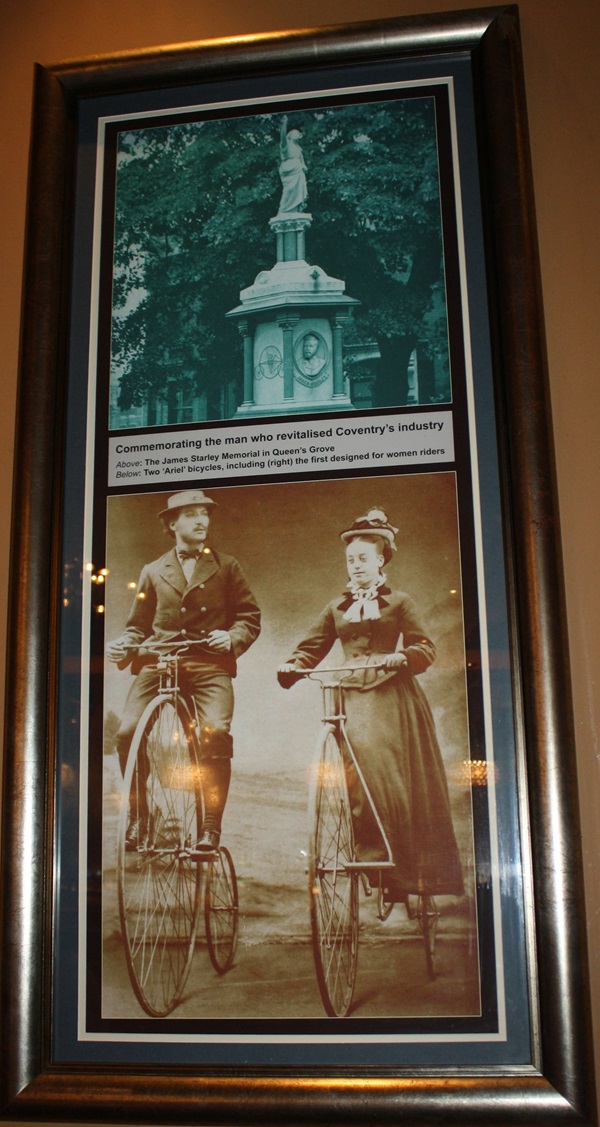
Above: The James Starley Memorial in Queen’s Grove
Below: Two ‘Ariel’ bicycles, including (right) the first designed for women riders
A photograph of an aerial view of Coventry with the three spires, prior to the enemy attacks of 1940-41.
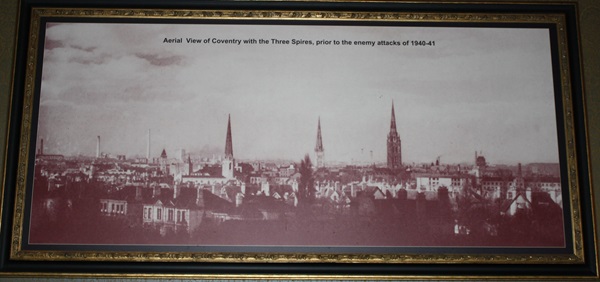
An oil painting entitled Harvest I, by Sue Lewis- Blake MA ASGFA.
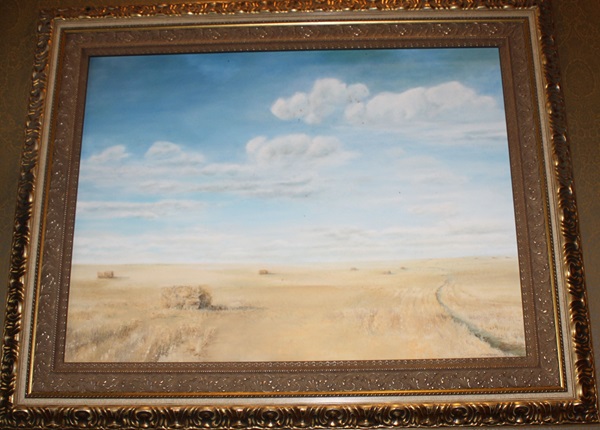
The text reads: Sue Lewis-Blake works and exhibits at her own studio/gallery near Warwick. Trained at the University College of Wales, Aberystwyth and at Goldsmiths’ College, London, she has exhibited widely throughout Britain. In October 2009 she was elected an associate of the National Society of Graphic Fine Artists.
Sue Lewis Blake’s recent work has focused on the agricultural landscapes of her home country Warwickshire. In Harvest I and II, the focus is on formal elements such as perspective and tonal variations. A subtle change of viewpoint or arrangement of shapes can significantly affect the mood of a work. This is explored in the paths cut through the fields and the construction of the clouds. The surface is equally significant and here the canvas has been deliberately creased in order to reflect the “straw” that is the main theme of the work.
External photograph of the building – main entrance.
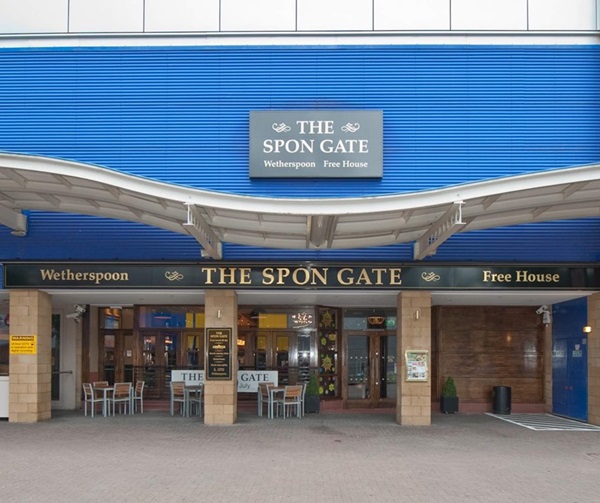
If you have information on the history of this pub, then we’d like you to share it with us. Please e-mail all information to: pubhistories@jdwetherspoon.co.uk